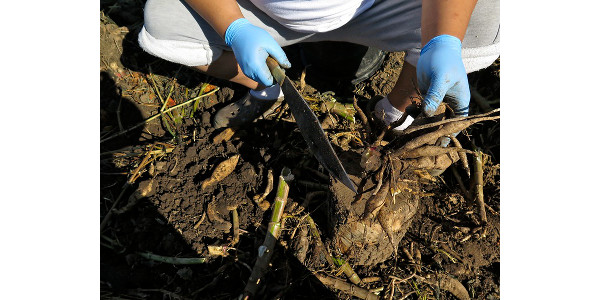After the foliage begins to dry up or is killed by frost, it’s time to dig up bulbs
ST. CLOUD, Minn. — Have you finished everything on your autumn to do list? It can be hard to get everything done. However, if you are hoping to enjoy some of your favorite flowers and save some money next spring you should be sure to dig and store your tender bulbs. Tender bulbs include tuberous begonia, freesia, dahlias, gladiolus, caladiums, canna, Oxalis and calla lilies and store them indoors for winter. If not dug up and stored in the proper manner, they will not survive the cold Minnesota winter.
The general rule of thumb is to dig your tender bulbs out of your gardens after the foliage begins to dry up or is killed by frost. Once the timing is right carefully dig up the tender bulbs. Use a fork or spade to gently loosen the roots several inches away from the plant’s base. Typically it works best to loosen the soil on all sides of the plant before attempting to lift up the clump. It is important to avoid cutting, breaking, or “skinning” the fleshy material. If damage is done, it makes the structure more susceptible to disease or rot.
After the bulbs have been dug clean the tender bulbs. Most plants need a gentle wash, however gladiolus corms store best if left unwashed and simply let dry out. Be sure to dust off any soil before putting in storage.
Then, the bulbs will need to cure. Curing time varies depending on species. Dahlias, cannas, callas, and caladiums have a short curing period of only one to three days. Gladiolus, oxalis, freesia, require a longer curing period of approximately three weeks. Gladiolus should cure in temperatures of approximately 60°F to 70°F. All tender bulbs should be stored out of direct sunlight and in well-ventilated areas.
Next, be sure to inspect for pests before storing away. Pests include both insects and fungus or other diseases. You may consider lightly dusting with an insecticide or fungicide according to the product’s label to avoid pests over winter. Long winters can make it difficult to remember exactly which bulbs are which come spring. I recommend labeling your bulbs as you put them in their final storage space.
Finally choose a location that is going to have a consistent temperature appropriate for your bulbs storage. Freesia, gladiolus, and oxalis should be stored at 35° to 40° F. Cannas and dahlias should be stored at 40° to 50° F. Tuberous begonia, caladium, and calla lily should be stored at 50° to 55° F.
Throughout the winter you will want to check in on your bulbs to ensure there are no signs of rot. If you notice rot or other similar issues remove any material that shows signs before the entire stock, and all of your work, is lost.
If you have additional questions about storing tender bulbs or other horticulturally related topics please reach out to your local Extension Educator. Residents in Stearns, Benton and Morrison Counties can call 320-255-6169 ext. 1.
Last modified: 10/02/2020








